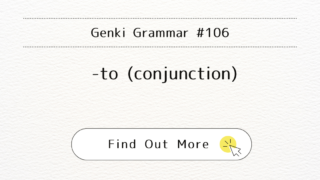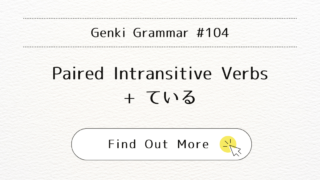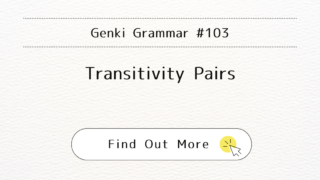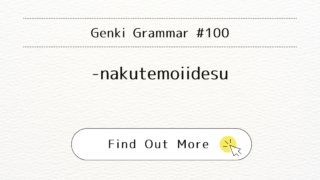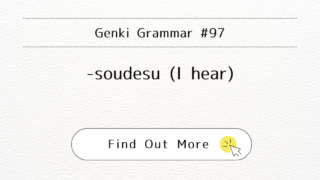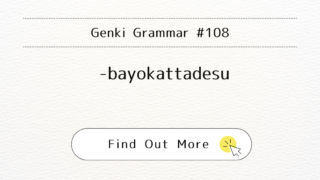 Grammar
Grammar Genki Grammar #108: Mastering -bayokattadesu
Learn how to use -ばよかったです (-bayokattadesu) to express regret or missed opportunities in Japanese with Genki Grammar #108: Mastering -bayokattadesu. Understand the structure and practice with examples.


